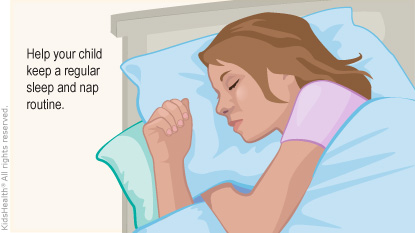Narcolepsy is a neurologic (brain) disorder that causes extreme sleepiness. Most kids with narcolepsy also have cataplexy (a temporary muscle weakness or loss of control during strong emotions like laughter, surprise, anger, or fear). They may have other symptoms too.
Narcolepsy is a lifelong condition that affects someone's home, school, and social life. Kids with the condition may struggle with behavior and learning problems, anxiety, and depression. They also might be heavier than other kids their age and go through puberty earlier.
There's no cure for narcolepsy, but taking medicines and creating healthy habits — like getting enough sleep, eating well, and getting plenty of physical activity — can help with many of its symptoms.


Follow your health care provider's recommendations for:
Talk to school staff about:
Help your child get enough sleep (at least 10 hours for grade-school kids and 8 hours for teens):
Support your child's overall well-being:

Your child:

What causes narcolepsy? In narcolepsy, the sleep–wake cycle is abnormal. Doctors and scientists don't know why this happens. It could be a problem with the balance of some neurotransmitters (chemicals that send signals in the brain), which tell the brain when to sleep and when to be awake. It can run in families, so there may be a genetic (inherited) cause.
What are the symptoms of narcolepsy? Along with extreme sleepiness and cataplexy, kids with narcolepsy might fall asleep during the day, have trouble moving for a few minutes while waking, and see/hear things that aren't there when falling asleep or waking up.